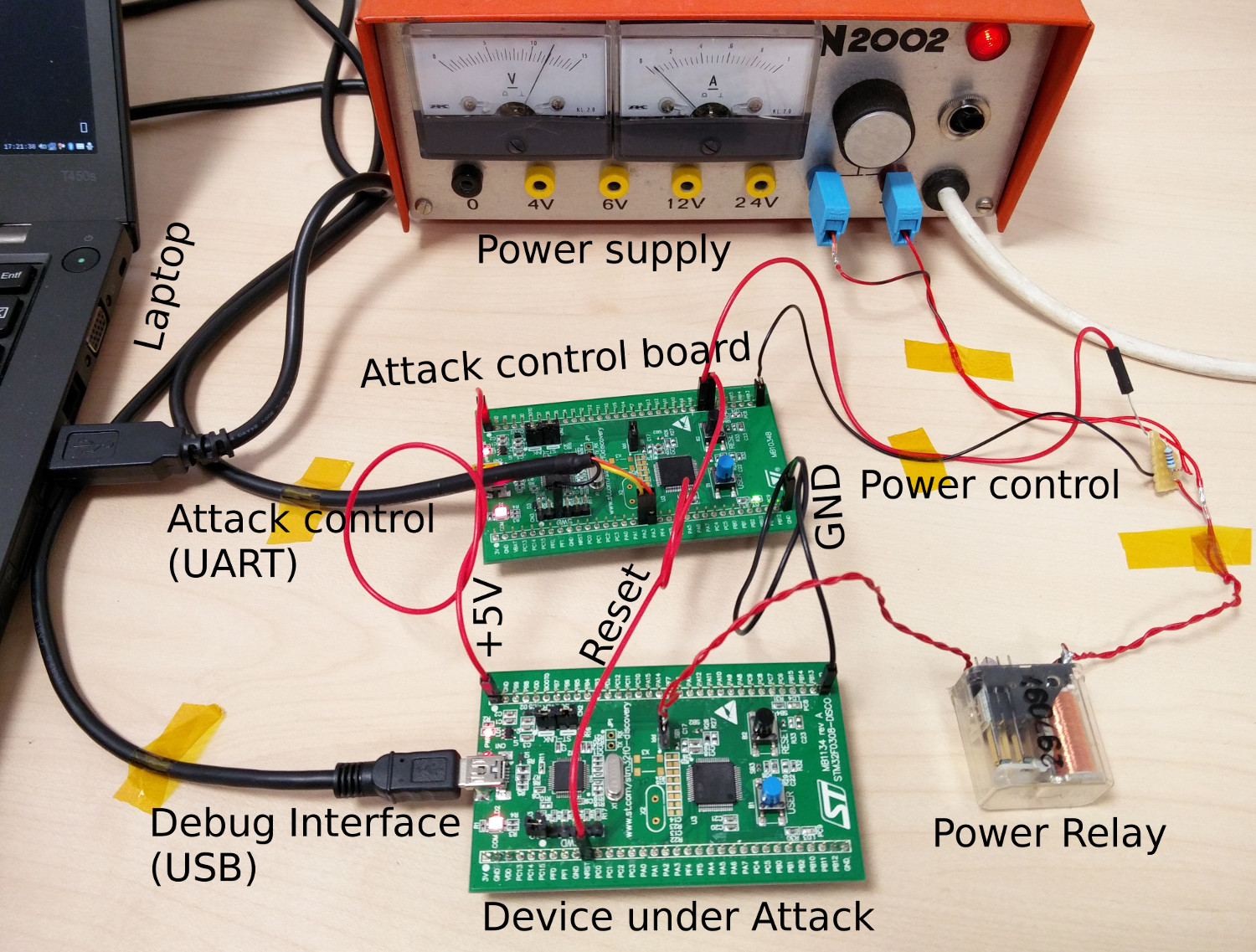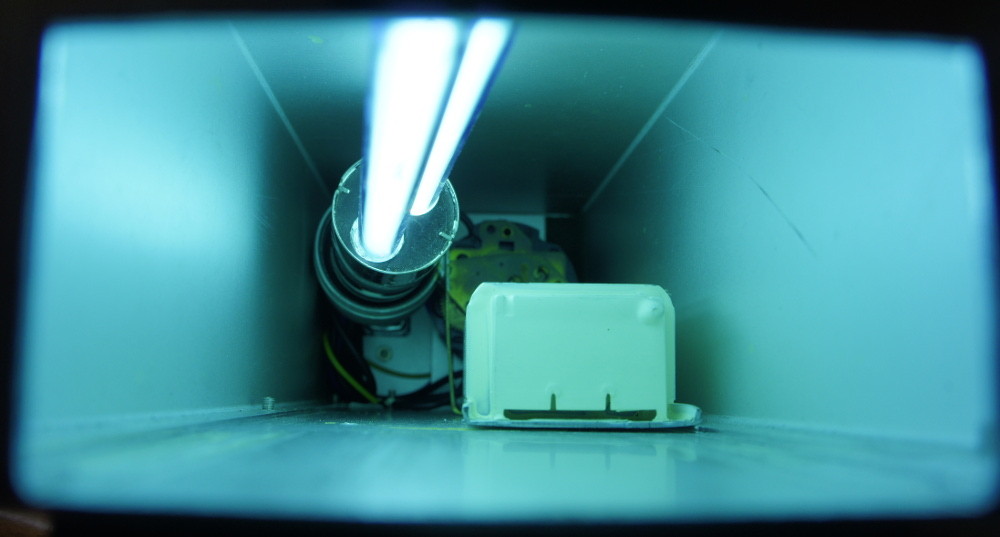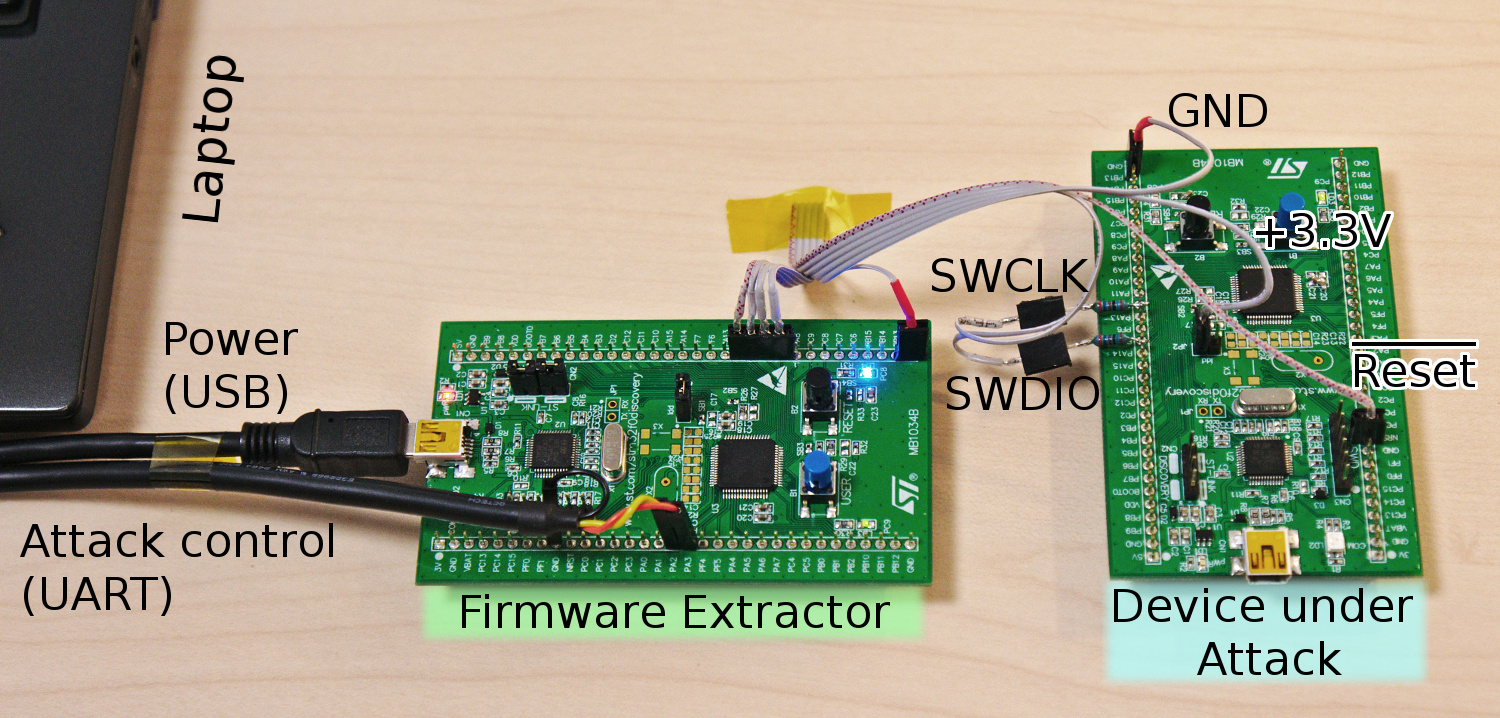Proceedings of the 11th USENIX Workshop on Offensive Technologies (WOOT '17) - Vancouver, BC, Canada CVE number 2017-18347
Almost every microcontroller with integrated flash features firmware readout protection. This is a form of content protection which aims at securing intellectual property (IP) as well as cryptographic keys and algorithms from an adversary. One series of microcontrollers are the STM32 which have recently gained popularity and thus are increasingly under attack. However, no practical experience and information on the resilience of STM32 microcontrollers is publicly available. The paper presents the first investigation of the STM32 security concept, especially targeting the STM32F0 sub-series. Starting with a conceptual analysis, we discover three weaknesses and develop them to vulnerabilities by demonstrating corresponding Proofs-of-Concept. At first, we discover that a common security configuration provides low protection which can be exploited using our Cold-boot Stepping approach to extract critical data or even readout-protected firmware. Secondly, we reveal a design weakness in the security configuration storage which allows an attacker to downgrade the level of firmware protection, thereby enabling additional attacks. Thirdly, we discover and analyze a hardware flaw in the debug interface, attributed to a race condition, that allows us to directly extract readprotected firmware using an iterative approach. Each attack requires only low-priced equipment, thereby increasing the impact of each weakness and resulting in a severe threat altogether.
 Fraunhofer Institute for Applied and Integrated Security
Fraunhofer Institute for Applied and Integrated Security 

